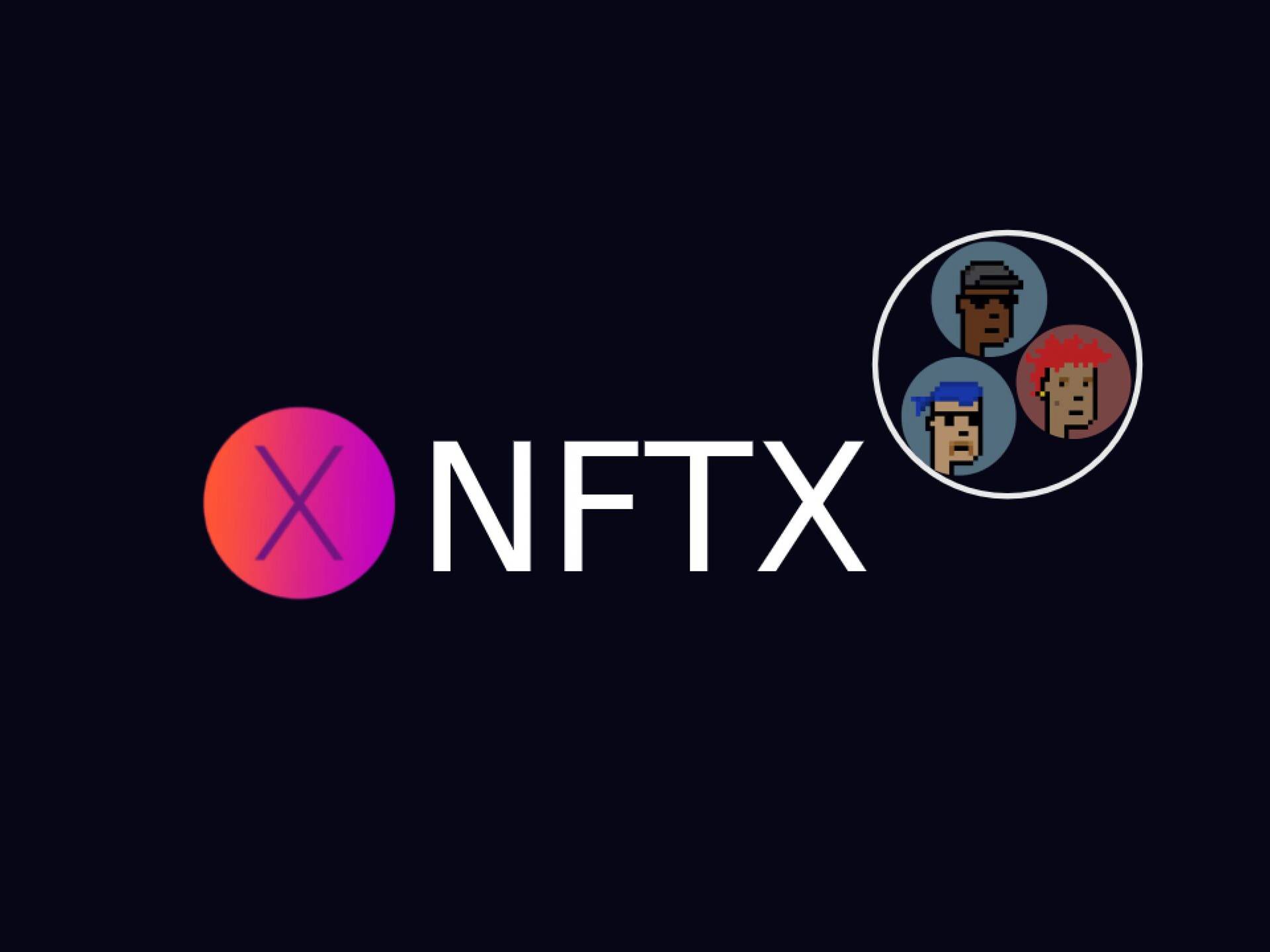위키 구독하기
Share wiki
Bookmark
NFTX
NFTX
NFTX(티커: NFTX)는 대체 불가능 토큰(NFT) 수집품을 기반으로 한 ERC-20 토큰을 생성하는 플랫폼입니다. 이러한 토큰은 펀드라고 불리며, (모든 ERC20과 마찬가지로) 대체 가능하고 합성 가능합니다[1][2].
사용자는 CryptoPunks, Axies, CryptoKitties, Avastars와 같은 자신이 좋아하는 수집품을 기반으로 Uniswap[3]과 같은 탈중앙화 거래소(DEX)를 통해 펀드를 생성하고 거래할 수 있습니다.
소개
- NFTX는 NFTX 프로토콜의 거버넌스 토큰입니다[4].
- 이 프로젝트는 2021년 1월에 시작되었습니다.
- NFTX에는 D1 펀드와 D2 펀드의 두 가지 유형의 펀드가 있습니다.
소개
프로토콜
NFTX(NFTX)는 탈중앙화 자율 조직(DAO)에 의해 구축되었으며, 이더리움에서 주요 NFT 지수 펀드 생태계를 시작했습니다. NFTX 스마트 계약은 NFT 수집품을 기반으로 하는 ERC-20 토큰을 생성하는 업그레이드 가능한 프록시를 사용하는 권한 없는 온체인 계약입니다[5](Aragon에서 NFTX DAO에 의해 제어됨 - 즉, NFTX 토큰 보유자는 합의에 도달하면 NFTX 스마트 계약을 변경할 수 있는 권한을 가짐).
이 인터페이스는 오픈소스 조직으로 구축되어 전 세계 어디에 있는 사용자라도 전문 지식이나 추가 리소스를 제공하여 NFTX의 성공을 증진시키기 위해 참여할 수 있습니다.
NFTX는 주요 NFT 지수 펀드 발행자가 되는 것을 목표로 하며, 누구든지 개별 자산에 투자할 때 필요한 기본적인 지식과 전문 지식 없이 NFT 시장에 투자할 수 있도록 합니다. 이렇게 함으로써 NFTX는 NFT 자산의 블랙홀 역할을 하게 됩니다.
NFTX 펀드
NFTX에는 D1 펀드(또는 입력) 및 D2 펀드(또는 최상위)로 알려진 두 가지 기본 유형의 펀드가 있습니다. NFTX 펀드는 아래에 설명되어 있습니다[6]:
D1 펀드(입력):
NFTX의 D1 펀드는 단일 NFT 계약과 ERC-20 계약 간에 1:1 비율의 백킹을 가지고 있습니다. 예를 들어, James가 PUNK-ZOMBIE 수집품 두 개를 소유하고 있다면 언제든지 두 개의 임의 좀비 CryptoPunk를 정확하게 상환할 수 있습니다. 또 다른 예로 Fred가 AXIE-MYSTIC-2를 하나 소유하고 있다면 Mystic 부품이 두 개인 임의의 Axie 하나를 상환할 수 있습니다. 아래는 NFTX 생태계 내에서 정의된 D1 펀드의 표본입니다.
| 펀드 유형 | 가격 | 거래량 | 공급량 |
|---|---|---|---|
| PUNK-BASIC | TBD | TBD | 122 |
| PUNK-FEMALE | TBD | TBD | 35 |
| PUNK-ATTR-4 | TBD | TBD | 27 |
| PUNK-ATTR-5 | TBD | TBD | 8 |
| PUNK-ZOMBIE | TBD | TBD | 4 |
| AXIE-ORIGIN | TBD | TBD | 61 |
| AXIE-MYSTIC-1 | '' | " | 8 |
| AXIE-MYSTIC-2 | " | " | 2 |
D2 펀드(최상위):
이러한 펀드는 D1 펀드를 결합한 Balancer 풀입니다. 예를 들어, AVASTR은 세 가지 다른 D1 Avastar 입력 펀드(AVASTR-BASIC, AVASTR-RANK-30 & AVASTR-RANK-60)를 결합한 D2 펀드입니다. 이는 사용자가 여러 토큰을 보유할 필요 없이 더 다양한 노출을 제공하기 위한 것입니다.
NFTX 활용
NFTX(NFTX)는 NFT 산업에 특화된 CoinMarketCap 웹사이트와 같은 것을 목표로 합니다.
궁극적으로 NFTX는 각각 실시간 가격, 거래량 및 TVL 데이터를 제공하는 100개 이상의 최상위 NFT 펀드의 중심이 되는 것을 목표로 합니다.
- NFTX.
NFTX의 목표 고객은 투자자, 차익거래자 및 NFT 유동성 제공자입니다. 이러한 목표 고객의 기능은 아래에 설명되어 있습니다.
투자자:
주요 제품은 하나 이상의 NFT 지수 펀드에 투자하여 NFT 시장에서 잘 분산된 포지션을 취하고자 하는 투자자를 위해 만들어졌습니다. 이러한 고객은 대부분 Uniswap과 같은 DEX 또는 1inch.exchange 또는 DEX.AG와 같은 집계자를 사용하여 공개 시장에서 펀드에 투자하기 때문에 NFTX 웹사이트에서 제공되는 제품과 직접 접촉하지 않을 가능성이 높습니다.
차익거래자
차익거래자는 NFT 지수 펀드와 기본 담보물의 최저 가격 간의 가격 차이로 이익을 얻을 수 있기 때문에 NFTX 프로토콜이 목표로 하는 두 번째 고객입니다.
유동성 제공자
NFTX가 해결하고자 하는 또 다른 중요한 고객은 하나 이상의 NFT 지수 펀드에 추가 유동성을 제공하여 이익을 얻을 수 있는 유동성 제공자(LP)입니다. 유동성 제공자는 NFTX 웹사이트의 제품을 사용하여 추가 NFT 펀드 토큰을 발행할 수 있으며, 이는 Balancer 풀이나 DEX에서 직접 유동성으로 제공될 수 있습니다[7].
네 번째 목표 고객은 NFT 수집가입니다. 그들은 같은 종류의 NFT를 다른 NFT와 교환하고자 하는 사람들입니다. 이러한 수집가는 NFTX 웹사이트에서 펀드 토큰을 발행하고 바로 상환하여 펀드에서 임의의 NFT를 되돌려 받을 수 있습니다.
D1 토큰 발행:
이는 NFTX 생태계 내의 기본 기능 중 하나입니다. D1 토큰은 특정 계약의 NFT에 1:1로 지원되는 ERC-20 토큰입니다. 예를 들어, PUNK-BASIC은 CryptoPunks에 의해 지원되는 D1 펀드 토큰입니다. 예를 들어 PUNK-BASIC을 발행하려면 CryptoPunk NFT의 소유권을 NFTX 스마트 계약에 넘겨야 합니다. 소유자/사용자가 PUNK-BASIC(예)을 가지게 되면 언제든지 소각하여 NFTX 준비금에서 임의의 CryptoPunk를 상환할 수 있습니다. 준비금에 있는 유일한 CryptoPunk가 그들이 이전한 CryptoPunk인 경우(즉, PUNK-BASIC의 공급량이 1인 경우) 상환할 때 동일한 CryptoPunk를 다시 받게 됩니다. 그러나 공급량이 더 큰 경우(예: 42) 사용자가 소유했던 정확한 CryptoPunk를 상환할 가능성은 낮습니다. 따라서 NFTX 사용자는 D1 펀드 토큰을 발행하기 전에 NFT를 양도하는 것에 대해 편리한지 확인하는 것이 중요합니다[8].
잘못된 내용이 있나요?
